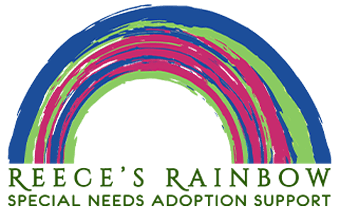Pyruvate dehydrogenase deficiency – homozygote for mutation p.R446 (disorder of pyruvate metabolism and gluconeogenesis). Microcephaly. Epilepsy
Diagnosis: Pyruvate dehydrogenase deficiency – homozygous for mutation p.R446 (disorder in the metabolism of pyruvic and gluconeogenesis). Microcephaly. Epilepsy.
A male child, born 2460 g., with a congenital genetic metabolic disease (pyruvate dehydrogenase deficiency), leading to a disorder in the absorption of sugars and carbohydrates. The child is on a strictly individual ketogenic diet (rich in fat and completely excluding carbohydrates). He is fed with special diet milk – Ketocal.
When conducting electroencephalography, epileptic activity was registered, which is why constant anticonvulsant therapy with Trileptal is being carried out. No epi-seizures have been observed after its initiation.
The child lags behind in physical, neuropsychiatric development and motor skills. He needs follow-up by a pediatric endocrinologist and dietician and a pediatric neurologist.
The boy has pronounced axial muscle hypotonia, hypertonia of the limbs. He sits up independently, but still does not stand up in the crib. He is placed in a walker and permanent rehabilitation is carried out. He is calm, does not isolate himself in the children’s group. He shows discontent when he does not like something, but quickly calms down. The child’s sleep is peaceful.
According to a Psychologist’s last Individual Characteristic from November 2024: “ …Over the past months, progress has been reported in the child’s general and fine motor skills. He stands up on his own on a stationary support and steps to the sides, holding on to the stationary support. The child moves by crawling. He can sit alone without support. He spends his waking hours with the other children in the group and he likes it very much, calm and smiling.
Jean-Luc is smiling, radiant, calm. He stands next to the children and does not isolate himself. There is no joint play yet. He cannot initiate contact with the children by himself. He shows dissatisfaction when he does not like something. He enjoys teasing from a familiar adult. During activities, he is involved, but is not active and shows little interest.
Diagnosis: Pyruvate dehydrogenase deficiency – homozygous for mutation p.R446 (disorder in the metabolism of pyruvic and gluconeogenesis). Microcephaly. Epilepsy.
A male child, born 2460 g., with a congenital genetic metabolic disease (pyruvate dehydrogenase deficiency), leading to a disorder in the absorption of sugars and carbohydrates. The child is on a strictly individual ketogenic diet (rich in fat and completely excluding carbohydrates). He is fed with special diet milk – Ketocal.
When conducting electroencephalography, epileptic activity was registered, which is why constant anticonvulsant therapy with Trileptal is being carried out. No epi-seizures have been observed after its initiation.
The child lags behind in physical, neuropsychiatric development and motor skills. He needs follow-up by a pediatric endocrinologist and dietician and a pediatric neurologist.
The boy has pronounced axial muscle hypotonia, hypertonia of the limbs. He sits up independently, but still does not stand up in the crib. He is placed in a walker and permanent rehabilitation is carried out. He is calm, does not isolate himself in the children’s group. He shows discontent when he does not like something, but quickly calms down. The child’s sleep is peaceful.
According to a Psychologist’s last Individual Characteristic from November 2024: “ …Over the past months, progress has been reported in the child’s general and fine motor skills. He stands up on his own on a stationary support and steps to the sides, holding on to the stationary support. The child moves by crawling. He can sit alone without support. He spends his waking hours with the other children in the group and he likes it very much, calm and smiling.
Jean Luc is smiling, radiant, calm. He stands next to the children and does not isolate himself. There is no joint play yet. He cannot initiate contact with the children by himself. He shows dissatisfaction when he does not like something. He enjoys teasing from a familiar adult. During activities, he is involved, but is not active and shows little interest.







